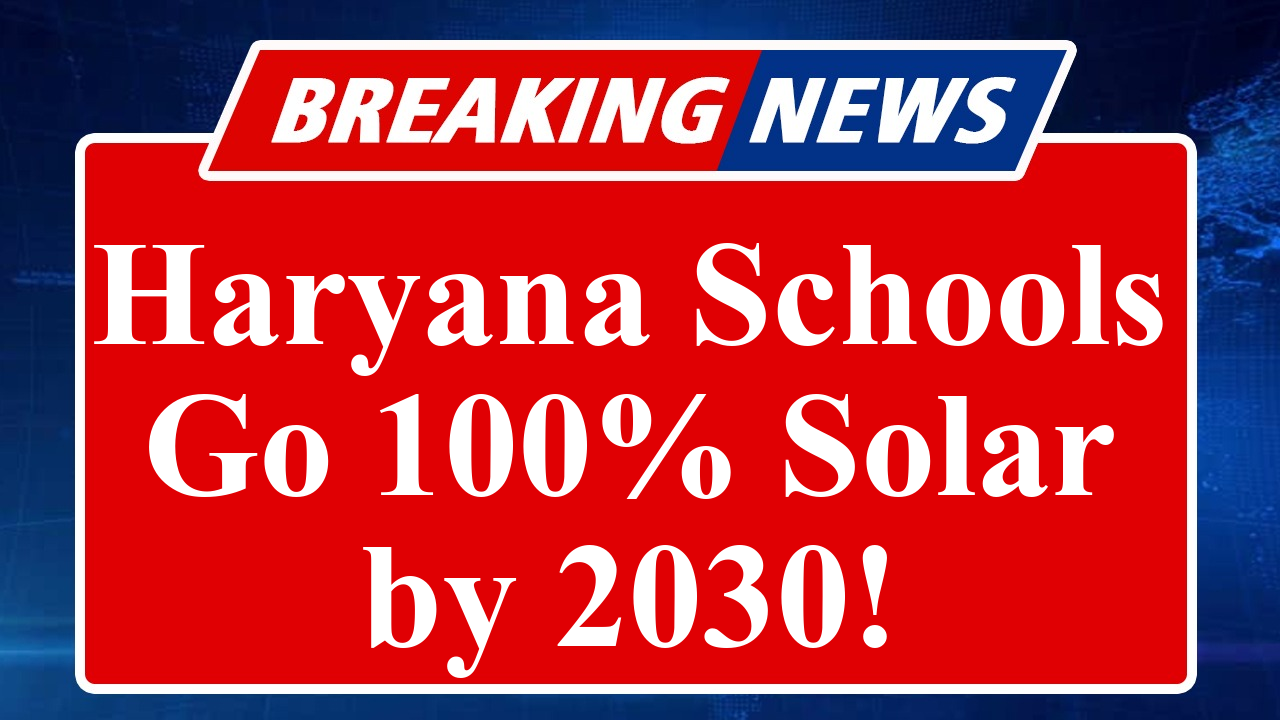*”Haryana’s ambitious Green Energy Yojana aims to transform all schools into 100% solar-powered institutions by 2030, starting with a pilot on 11 June 2025. The initiative, backed by HAREDA, promotes sustainable energy, reduces electricity costs, and fosters environmental education. With central and state subsidies, it targets over 15,000 schools, setting a model for renewable孩
Haryana’s Bold Step Toward Solar-Powered Schools
In a groundbreaking move to promote sustainable energy, Haryana’s Green Energy Yojana, launched under the aegis of the Haryana Renewable Energy Development Agency (HAREDA), is set to transform the state’s education sector by making all schools 100% solar-powered by 2030. The initiative kicks off with a pilot phase on 11 June 2025, targeting over 15,000 government and aided schools across the state. This aligns with India’s broader renewable energy goals, including the PM Surya Ghar: Muft Bijli Yojana, which has already seen significant traction with over 95 lakh households registered for rooftop solar installations as of April 2025.
The scheme leverages Haryana’s abundant sunshine to install grid-connected rooftop solar systems on school buildings, ensuring a reliable and cost-effective power supply. The state government, in collaboration with the Ministry of New and Renewable Energy (MNRE), will provide subsidies to cover up to 40% of installation costs for systems ranging from 1 kW to 3 kW. For a 2 kW system, a subsidy of ₹60,000 is available, while a 3 kW system qualifies for ₹78,000. These financial incentives aim to make the transition affordable, with the added benefit of net metering, allowing schools to offset electricity costs by exporting surplus power to the grid.
Beyond cost savings, the initiative has an educational component. Schools will integrate lessons on renewable energy into their curricula, fostering environmental awareness among students. The pilot phase, starting in June 2025, will focus on 500 schools, prioritizing rural and semi-urban areas. HAREDA has streamlined the application process through the Saral Haryana portal, ensuring transparency and efficiency. Successful implementation could save schools significant electricity expenses, with estimates suggesting annual savings of ₹15,000–18,000 crore nationally through solar adoption.
Haryana’s solar push builds on its existing renewable energy achievements. As of December 2024, the state’s installed solar capacity stands at 122.22 million units, with plans to scale up to 6,000 MW by 2030—a 22-fold increase. The Green Energy Yojana also complements other state schemes, such as the Solar Water Pumping Yojana, which offers 75% subsidies for farmers, reflecting a holistic approach to renewable energy adoption.
The initiative has garnered support from both central and state authorities, with Haryana’s Chief Minister emphasizing its role in positioning the state as a leader in India’s clean energy transition. By equipping schools with solar infrastructure, the government aims to create a sustainable model that other states can emulate, contributing to India’s target of 100 GW solar capacity, which was crossed in January 2025.
Disclaimer: This article is based on information from government websites, renewable energy portals, and recent reports on Haryana’s solar initiatives. Data is accurate as of July 2025, but policies and figures may evolve. Readers are advised to verify details through official sources like HAREDA or MNRE for the latest updates.

